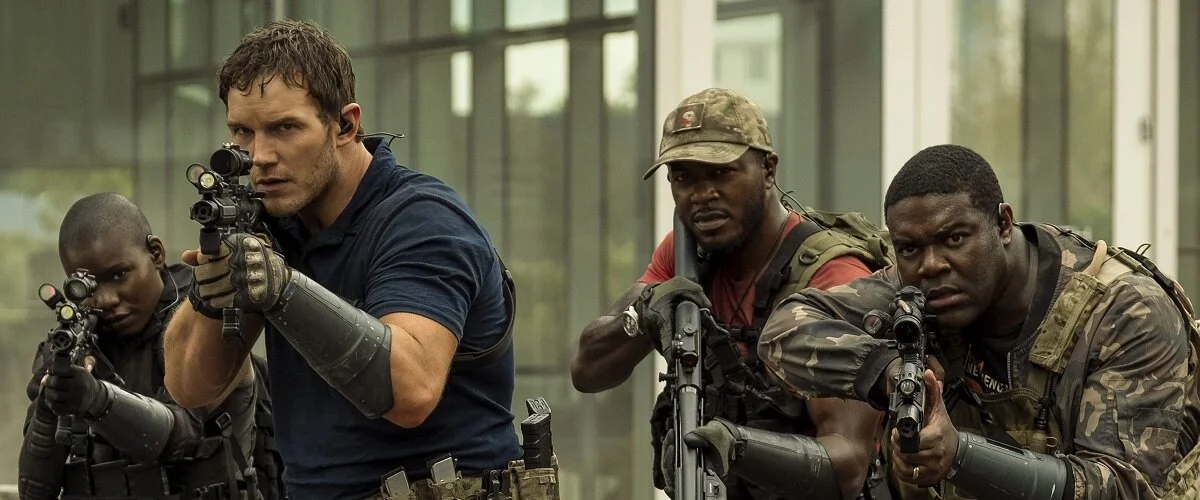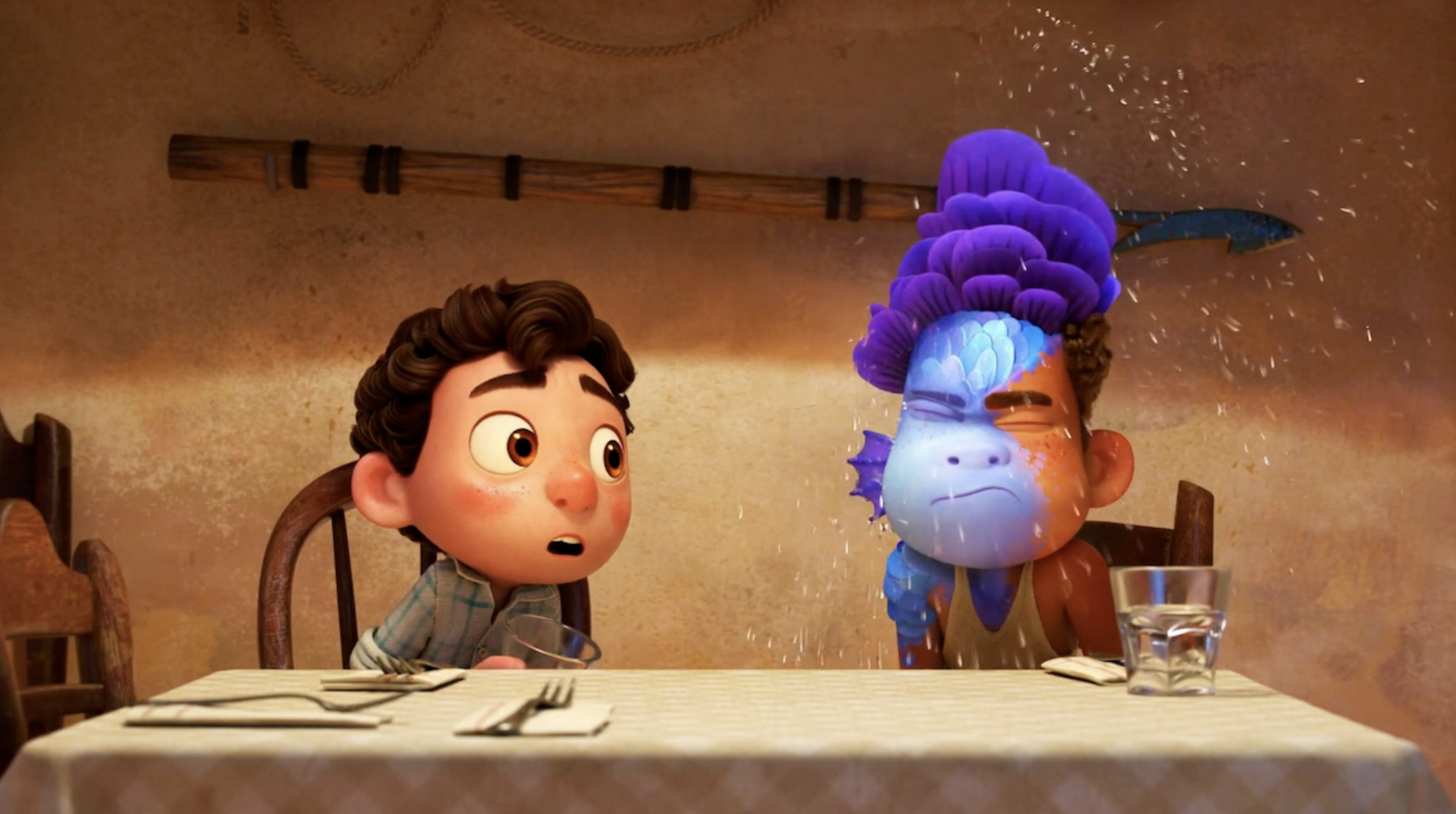BLACK WIDOW
Directing: B
Acting: B+
Writing: B
Cinematography: B
Editing: B+
Special Effects: B+
There’s something easily confusing for casual watchers of Marvel movies, when it comes to Black Widow. This movie is set after the events of Captain America: Civil War, which came out in 2016, and effectively sets Black Widow in 2016. That’s at least a couple of years before the events of Avengers: Infinity War, and seven years before the ultimate fate of the Black Widow character revealed in Avengers: Endgame. Just to spice things up a little, let’s throw in the fact that Endgame was released in 2019 but set in 2023; Black Widow is released in 2021 after an originally scheduled 2020 release due to a real-life pandemic; and the fact that although this is the first feature film dedicated to Black Widow, even though it’s the eighth MCU movie in which the character appears (ninth if you count another movie’s mid-credits sequence).
If you weren’t confused before, maybe you are now? I’ve only managed this level of understanding thanks to a couple of podcasts and a bit of online research. I maintain, however, that a movie should make itself clear without the need for extracurricular research, and nothing in the actual content of Black Widow makes this setting in the timeline clear—at least not to anyone without a photographic memory of the entire MCU timeline. The way I see it, this is a strike against both Black Widow and the broader Marvel Cinematic Universe.
Luckily, Black Widow still has a lot going for it. Namely, that it mostly works as a self-contained film, in that if you don’t even know it’s part of this far larger “cinematic universe,” that makes the movie arguably less confusing. Even more importantly, it’s just a lot of fun.
This is now the fourth superhero movie in recent years that focuses on a woman superhero, which is still a small enough number that it invites deeply unfair comparisons. Personally, I liked all the others about as well as any of the others, for different reasons in each case which averaged out to about the same quality of blockbuster cinema: the original Wonder Woman (2017) exceeded expectations before devolving into the same climactic battle with a bland villain we’ve seen in countless of these movies; Captain Marvel (2019) was fun but largely forgettable, save for a truly delightful alien cat; and although Wonder Woman 1984 (2020) was met with derision both wide and deep, I thought it was fine.
With the exceptions of a few threads among those three films that could be singled out as moving things forward in a positive way, particularly for representation of women in film, they also have something else in common: an undercurrent of mediocrity. Theres a key difference on this front with Black Widow that I love: it’s not just about one woman as the main character, nor is it just packed with badass women supporting characters who serve the story of the main hero. Black Widow is all of those things at once, and I can think of no other superhero movie that can claim the same.
I just love how prominently women play into every level of plotting in this movie. The central story revolves around the sisterly relationship between Natasha Romanoff (Black Widow) and Yelena, two trained assassins who learned at a young age that they were not really sisters and were just part of an artificially constructed American family of Russian spies. The quasi-sisters are played by (as we all know) Scarlett Johansson and the incomparable Florence Pugh. Pugh sits surprisingly comfortably in the blockbuster action role, after a series of memorable parts in often disturbing dramas. Honestly, given the changing nature of movie making in America, my greatest hope for Pugh is that she takes this large paycheck parts so that she can continue turning incredible dramatic performances in smaller budget films and still make a living.
The parents in the aforementioned Russian family are played by David Harbour and Rachel Weisz, both of whom play prominently in the story here, Harbour being a Russian “super soldier” largely regarded as that nation’s counterpart to Captain America. Whether they are meant to be seen as villainous or heroic, or at what point they cross over from one to the other, is a little muddled, but as with any movie like this, don’t think about it too much and you’ll be fine. For Harbour’s part, his performance is by far the hammiest in the entire film, and seems to be a bit polarizing among audiences. I actually found it entertaining.
There is also some clarity needed when it comes to “the villain” of Black Widow. Technically, it’s Ray Winstone as Dreykov, a Russian mastermind who has developed an army of exclusively young women assassins who are victims of his chemical brain alteration that allows for mind control. A lot of this stuff is both ridiculous and very James Bond, but that doesn’t distract from how fun the movie is. Anyway, the villain effectively is actually yet another woman, with the unfortunately hokey nameof “Taskmaster” (Olga Kurylenko). She is Dreykov’s prized pupil of mind control, programmed to learn the fighting style of anyone she fights.
As such, Black Widow’s two main heroes are women; their most challenging adversary is. woman; they are aided by a complicated but equally heroic mother figure (along with an exceptionally strong father figure, yay gender equality!); and several scenes feature a large group of mind-controlled woman assassins. The latter group is generally and predictably easily dispatched, but the point is this: where most blockbuster movies feature just a few key female characters—even if they are the protagonists—with the entire rest of the significant parts rounded out by men, Black Widow completely flips that script.
And maybe audiences are finally getting used to this idea? Both the original Wonder Woman and Captain Marvel were pointless victims of insane amounts of sexist backlash, and I haven’t seen anything like that in response to Black Widow. Presumably this is due to a host of factors, not least of which is the fact that audiences have been seeing Black Widow as a supporting character in other MCU movies already for a decade. The difference is that Black Widow really leans in with its casting of women (to be fair, the only women of color are among the mind controlled assassins, and none of them get any real lines, let alone anything even remotely like character development—but, one step at a time, I guess), and for once, it seems to be working with audiences.
Of course, none of that would be making much difference if the movie did not work on its own merits, and it does. Black Widow is far from perfect, it had multiple scenes of such jaw dropping implausibility that I literally rolled my eyes, and it puts Black Widow herself through so much turmoil that one has to wonder how any Avengers get any rest at all, even when they’re supposedly “taking a break.” The villain is once again obsessed with megalomaniacal goals of world domination, something I tired of long ago and is usually a reason for me to skip superhero movies. Except, I like to get tickets to movies that focus on women and minorities so I can add to the audience size and help prove that such movies do have an audience. In this case, it absolutely proved worth it, mostly thanks to a dazzling cast with real, across-the-board onscreen chemistry with each other.
Sister Act Redux
Overall: B+










